Table of Contents
List of Prime Ministers of India From 1947 to 2024- Narendra Modi presently holds the position of the 14th Prime Minister of India. A victory in another term would place him as the fourth Prime Minister to achieve such a feat and notably, the first non-Congress Prime Minister to do so. This piece delves into the comprehensive List of Prime Ministers of India, highlighting their significant contributions to the nation. In the Indian electoral system, Lok Sabha elections occur every five years, allowing citizens to cast their votes and select the Prime Minister, a pivotal figure in guiding the country.
List of Prime Ministers of India From 1947 to 2024
In India, the Prime Minister acts as the effective head of the Union executive. While formally chosen by the President, the person selected to be Prime Minister must lead the party with the majority in the Lok Sabha. If no single party has a clear majority, the President may use discretion to appoint the Prime Minister. Typically, in such cases, the President appoints the leader of the largest party or coalition in the Lok Sabha as Prime Minister, with the mandate to secure a vote of confidence within one month. In the 72 years since independence, India has had 19 Prime Ministers. Below is a table listing the Prime Ministers of India along with their terms in office:
| List of Prime Ministers of India From 1947 to 2024 | ||||
| S.No. | Names | Birth-Death | Tenure | Interesting Facts |
| 1 | Jawahar Lal Nehru | (1889–1964) | 15 August 1947-27 May 1964 16 years, 286 days. |
Prime Minister of independent India for the first and longest period. First, the in-office death of a prime minister. |
| 2 | Gulzarilal Nanda | (1898–1998) | 27 May 1964 to 9 June 1964 13 days. |
After Nehru’s untimely death, the nation’s first acting prime minister assumed control. |
| 3 | Lal Bahadur Shastri | (1904–1966) | 9 June 1964 to 11 January 1966 1 year, 216 days. |
During the Indo-Pak war in 1965, he was the originator of the phrase “Jai Jawan Jai Kisan.” |
| 4 | Gulzarilal Nanda | (1898-1998) | 11 January 1966, 24 January 1966 13 days. |
The only man to have twice served as acting prime minister of India. |
| 5 | Indira Gandhi | (1917–1984) | 24 January 1966 to 24 March 1977 11 years, 59 days. |
The Indian prime minister’s spouse, who took the oath of office |
| 6 | Morarji Desai | (1896–1995) | 24 March 1977 – 28 July 1979 2 years, 126 days. |
First PM in 1977 following the emergency. At 81 years old, India’s oldest prime minister took the oath of office before resigning. His birthday was celebrated once every four years because he was born on February 29. |
| 7 | Charan Singh | (1902–1987) | 28 July 1979 to 14 January 1980 170 days. |
Only PM who has never addressed the legislature |
| 8 | Indira Gandhi | (1917–1984) | 14 Jan.1980 to 31 Oct. 1984 4 years, 291 days. |
Following the disaster in 1977, the first PM returned to power in 1980. Like her father, she also passed away while in office. |
| 9 | Rajiv Gandhi | (1944–1991) | 31 Oct 1984 to 2 Dec 1989 5 years, 32 days. |
At the age of 40, he became India’s youngest prime minister. |
| 10 | V. P. Singh | (1931–2008) | 2 Dec 1989 to 10 Nov 1990 343 days. |
First prime minister to leave following a no-confidence vote |
| 11 | Chandra Shekhar | (1927–2007) | 10 Nov 1990 to 21 June 1991 223 days. |
He has never held a position of minister in any ministry. |
| 12 | P. V. Narasimha Rao | (1921–2004) | 21 June 1991 to 16 May 1996, 4 years, 330 days. | He was from Andhra Pradesh and served as the nation’s first South Indian prime minister. |
| 13 | Atal Bihari Vajpayee | (1924-2018) | 16 May 1996 to 1 June 1996 16 days. |
The shortest tenure of any Indian PM is 16 days as PM. |
| 14 | H. D. Deve Gowda | (born 1933) | 1 June 1996 to 21 April 1997 324 days. |
He succeeded as South India’s second prime minister. He is a Karnataka native. But he didn’t work there for more than a year. |
| 15 | Inder Kumar Gujral | (1919–2012) | 21 April 1997 to 19 March 1998 332 days. |
After Indra Gandhi and Deve Gowda, the third Prime Minister came from the Upper House. |
| 16 | Atal Bihari Vajpayee | (born 1924-2018) | 19 March 1998 to 22 May 2004 6 years, 64 days. |
First non-Congress Prime Minister of independent India to serve out his full tenure |
| 17 | Manmohan Singh | (born 1932) | 22 May 2004 to 26 May 2014 10 years, 4 days. |
First PM of India from a minority community. |
| 18 | Narendra Modi | (born 1950) | 2014-Present | Three PMs served two terms or more before Modi. In 2019, he too was added to this coveted list. |
Who is called the Prime Minister of India?
- The Prime Minister of India is the head of government of the Republic of India.
- Even though the President of India is the constitutional, nominal, and ceremonial head of state, in ordinary parlance, the executive authority is vested in the Prime Minister and his chosen Council of Ministers.
- In 72 years of independence, India has got its 19 Prime Ministers.
- Uttar Pradesh is the state that has the most number of Prime Ministers.
List of Cabinet Ministers of India
Brief Introduction of Prime Ministers of India
India has been led by a series of remarkable individuals who have served as Prime Ministers. These leaders have been crucial in determining the direction of the nation and have guided India through its political, economic, and social hurdles. From Jawaharlal Nehru, the inaugural Prime Minister of independent India, to the present Prime Minister Narendra Modi, each leader has brought their distinctive vision and leadership approach to the forefront.
Prime Minister of India List
Jawaharlal Nehru assumed office as the inaugural Prime Minister of India on August 15, 1947, while the current Prime Minister is Narendra Damodardas Modi. Explore the table below for a comprehensive List of Prime Ministers of India spanning from 1947 to 2024.
Jawaharlal Nehru (15th Aug 1947- 27th May 1964)
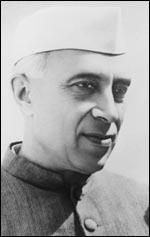
- He was the first Prime Minister of independent India who played an important role in shaping modern India by transmitting modern values and thinking.
- Being a social reformer, one of his major works was reforming the ancient Hindu civil code, which gave Hindu widows equal rights to men.
- He was also the author of many books like Discovery of India.
Gulzarilal Nanda
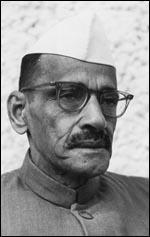
- 1st Term- Interim(27th May 1964- 9th Jun 1964)
- 2nd Term- 11th January 1966- 24th January 1966
- The first interim Prime Minister of India. He served twice as an interim PM in 1964 after Jawaharlal Nehru’s death and then in 1966 when Lal Bahadur Shastri passed away.
- He also received India’s highest civilian honor, Bharat Ratna, in 1997.
Lal Bahadur Shastri (9th June 1964 -11th January 1966)
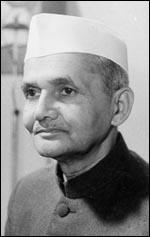
- An ardent follower of Mahatma Gandhi, who gave the popular slogan ‘Jai Jawan Jai Kisan’ after the 1965 India- Pakistan war.
- He was a soft-spoken person who promoted the ‘White Revolution’ to increase milk production in India. Then, this great personality died in the USSR during his visit.
Indira Gandhi
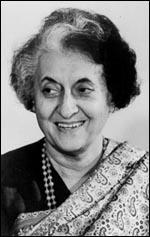
- First Term(24th January 1966- 24th March 1977)
- Second Term(14th January 1980- 31st October 1984)
- She was the first woman Prime Minister of India & also the world’s longest-serving woman PM.
- Her contributions were remembered for India’s win over Pakistan in 1971.
- However, she is also criticized for the emergency imposed from 1975- 1977.
- Ultimately, she was killed by her own bodyguards at her official residence in New Delhi.
Morarji Desai (24th March 1977- 28th July 1979)
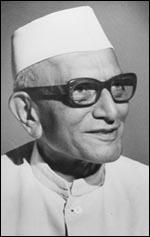
- Morarji Desai was the first non-Congress Prime Minister of India.
- He and his minister formally ended the state of emergency that Indira Gandhi from 1975-1977 imposed.
- He is also considered one of the oldest individuals to take over the responsibilities of the Prime Minister and was also the Indian PM to resign during his tenure.
Charan Singh (28th July 1979- 14th January 1980)
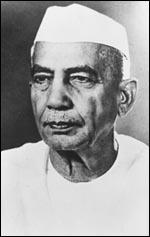
- Charan Singh has been the Revenue Minister of Uttar Pradesh who removed the Zamindari system and brought in Land Reform Acts.
- Afterward, in 1970 Charan Singh also became the Chief Minister of Uttar Pradesh.
Rajiv Gandhi (31st October 1984- 2nd December 1989)
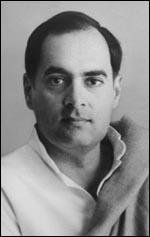
- Rajiv Gandhi became the youngest Prime Minister to take office and played a significant role in bringing computers to India.
- He modernized the Indian administration & worked to improve the bilateral relationships with the US, which undoubtedly expanded economic cooperation.
- He was also the second PM of India to have been killed during his tenure, after Indira Gandhi.
Shri Vishwanath Pratap Singh (2nd December 1989- 10th November 1990)
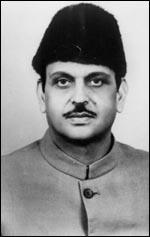
- V.P. Singh was the founder of Gopal Vidyalaya, Allahabad. He was first appointed as the Chief Minister of Uttar Pradesh by Indira Gandhi.
- Later he became the Prime Minister of India. Under his tenure, the decision to provide 27% reservation to OBC was implemented.
- He was also the first Indian Prime Minister who had to step down after a no-confidence motion.
Chandra Shekhar (10th November 1990-21st June 1991)
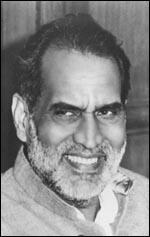
- Chandra Shekhar, the 9th Prime Minister, had been a part of several political parties.
- First, he was a member of the Socialist Party and later joined the Congress and then the Janata Dal Party.
- He was the President of the Janata Party from 1977- 1988.
P.V. Narasimha Rao(21st June 1991- 16th May 1996)
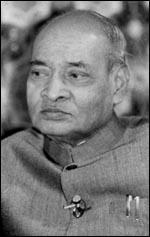
- P. V. Narasimha Rao was one of the brilliant administrators who brought major economic reforms.
- He is also known as the Father of Indian Economic Reforms.
- It was he who dismantled the License Raj and reversed the socialist policies of Rajiv Gandhi’s government.
- Due to such abilities and work, he is also referred to as ‘Chanakya’.
Atal Bihari Vajpayee
- First Term(16th May 1996-1st June 1996)
- Second Term(18th March 1998- 22nd May 2004)
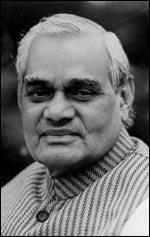
-Atal Bihari Vajpayee was one of the finest Prime Ministers our country had ever seen. During his tenure, inflation was very low in India.
-He worked on economic reforms and policies, and telecom sectors, and focused more on rural India.
-Interestingly, during his tenure, the India-Pakistan relationship got a little better.
-He is one of the only leaders who has won six Lok Sabha constituencies from four different states (UP, Delhi, MP, and Gujarat).
H.D. Deve Gowda (1st June 1996- 21st April 1997)
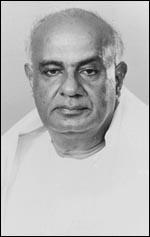
- Deve Gowda held additional charges of Home Affairs, Petroleum, and Chemicals, Urban Employment, Food processing, Personnel, etc., during that time.
- He had been collectively elected as leader of the United Front coalition government.
- The most significant work during his term as PM was his resistance to signing CTBT(Comprehensive Test Ban Treaty).
I.K. Gujral (21st April 1997- 18th March 1998)
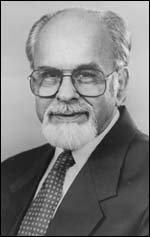
- Shri Inder Kumar Gujral was sworn in as the 12th Prime Minister of India on Monday, the 21st of April, 1997.
- Before assuming the office of the Prime Minister of India, Shri Gujral was the Minister of External Affairs from June 1, 1996, and held additional charge of the Ministry of Water Resources from June 28, 1996.
- He was the Minister of External Affairs earlier from 1989 to 1990. He was Ambassador of India to the U.S.S.R. (Cabinet Rank) from 1976-1980.
Manmohan Singh (22nd May 2004 -17th May 2014)
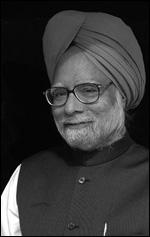
- The major task done during the tenure of Manmohan Singh was working for the reformation of the banking, the financial sector, and public companies.
- His government brought in the value-added tax and worked & even the National Rural Health Mission commenced in the year 2005. Eight additional IITs were opened in Andhra Pradesh, Bihar, MP, Orissa, Gujarat, Punjab, Rajasthan, and Himachal Pradesh.
Narendra Modi
- First Term (26th May 2014 -23rd May 2019)
- Second Term (30th May 2019 -Incumbent)
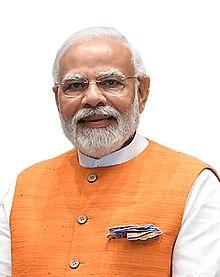
- Sri Narendra Damodardas Modi held office as PM on May 26, 2014.
- He is the 15th Prime Minister of India.
- Since the beginning of his tenure in 2014, he has shown strict governance & has enforced many policies, such as the Jan Dhan Yojana, Swachh Bharat Abhiyan, the Clean Ganga project, etc., for the upliftment of the nation.
- His government abrogated menaces like Triple Talaq, Article 370, etc.
- Narendra Modi was sworn in as the 16th Prime Minister for the second term from May 30, 2019.
Important Facts about Prime Ministers of India for UPSC
The Prime Ministers of India have been very important in shaping the country’s future. Leaders like Jawaharlal Nehru, Indira Gandhi, Rajiv Gandhi, and Atal Bihari Vajpayee each helped India in different ways. They did things to make India better, like starting democracy and planning for the economy.
| Longest-serving Prime Minister of India | Jawaharlal Nehru (1947 – 1964) |
| India’s second-longest-serving Prime Minister | Indira Gandhi |
| Two times as acting Prime Minister | Gulzari Lal Nanda |
| The Bharat Ratna was awarded to the first Female Prime Minister | Indira Gandhi |
| The first Prime Minister of India who was not a member of the Congress | Morarji Desai |
| The highest civilian honor in Pakistan was given to the Indian Prime Minister | Morarji Desai |
| India’s Youngest Prime Minister | Rajiv Gandhi |
| First South Indian Prime Minister | P.V. Narasimha Rao |
| The first Prime Minister of India who was a member of the Rajya Sabha | Indira Gandhi |

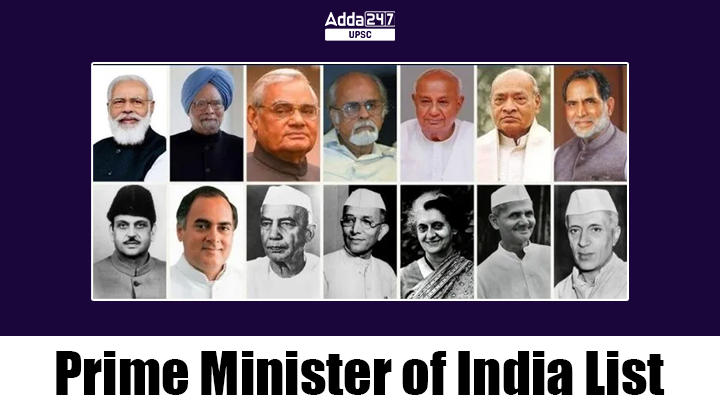

 UPSC Eligibility Criteria 2024- Age Limi...
UPSC Eligibility Criteria 2024- Age Limi...
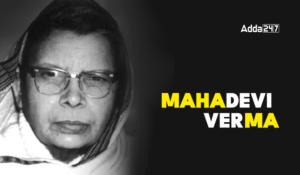 Mahadevi Verma Early Life, Education, Pr...
Mahadevi Verma Early Life, Education, Pr...
 Medical Council of India-History, Object...
Medical Council of India-History, Object...







